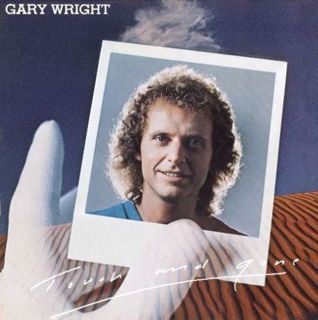The Power of Love or Power of Love may refer to:
A game is a recreational activity with a set of rules.

SeaQuest DSV is an American science fiction television series created by Rockne S. O'Bannon. It aired on NBC between 1993 and 1996. In its final season, it was renamed seaQuest 2032. Set in "the near future", seaQuest DSV originally mixed high drama with realistic scientific fiction. The first two seasons star Roy Scheider as Captain Nathan Bridger, designer and commander of the eponymous naval submarine seaQuest DSV 4600, the ship prefix standing for "deep-submergence vehicle".

Robert Heath Foxworth is an American film, stage, and television actor.

Spooky Tooth were an English rock band originally formed in Carlisle in 1967. Principally active between 1967 and 1974, the band re-formed several times in later years.

Gary Malcolm Wright was an American musician and composer best known for his 1976 hit songs "Dream Weaver" and "Love Is Alive". Wright's breakthrough album, The Dream Weaver (1975), came after he had spent seven years in London as, alternately, a member of the British blues rock band Spooky Tooth and a solo artist on A&M Records. While in England, he played keyboards on former Beatle George Harrison's triple album All Things Must Pass (1970), so beginning a friendship that inspired the Indian religious themes and spirituality inherent in Wright's subsequent songwriting. His work from the late 1980s onwards embraced world music and the new age genre, although none of his post-1976 releases matched the same level of popularity as The Dream Weaver.

Andrew Newmark is an American session drummer who was a member of Sly and the Family Stone and has played with George Harrison, John Lennon, Pink Floyd, David Bowie, Ron Wood and Roxy Music.
Brave New World is a 1932 novel by Aldous Huxley.

"Dream Weaver" is a song by the American singer Gary Wright, released as the first single from his third studio album The Dream Weaver in December 1975.
To Be or Not to Be may refer to:
Dead End or dead end may refer to:

The Dream Weaver is a solo album by American singer and musician Gary Wright released in July 1975.
A vapor is a substance in the gas phase below its critical temperature.

"Love Is Alive" is a song by Gary Wright taken from the 1975 album The Dream Weaver. It features Wright on vocals and keyboards and Andy Newmark on drums, with all music except for the drums produced on the keyboards. The album's title cut and "Love Is Alive" both peaked at No. 2 on the Billboard Hot 100 singles chart. "Love Is Alive" spent 27 weeks on the chart, seven weeks longer than "Dream Weaver". Billboard ranked "Love Is Alive" as the No. 9 song of 1976.

Tnalak, is a weaving tradition of the Tboli people of South Cotabato, Philippines. T'nalak cloth is woven exclusively by women who have received the designs for the weave in their dreams, which they believe are a gift from Fu Dalu, the T'boli Goddess of abacá.

Footprint is the second solo album by American musician Gary Wright, released in 1971 on A&M Records. It contains "Stand for Our Rights", an anthem-like song calling for social unity that was issued as a single in advance of the album. Wright recorded the majority of Footprint in London with a large cast of musicians – including George Harrison, Hugh McCracken, Alan White, Klaus Voormann, Jim Gordon, Jim Keltner and Bobby Keys – many of whom, like Wright, had played on Harrison's All Things Must Pass triple album in 1970. Harrison's contributions included an uncredited role as producer, and serve as an example of his support for Wright during the early stages of Harrison's solo career. The ballad "Love to Survive" is one of three tracks that feature an orchestral arrangement by John Barham.

Touch and Gone is the fifth album by American rock musician Gary Wright. It was released in November 1977 on Warner Bros. Records as the follow-up to The Light of Smiles. Wright changed his approach to songwriting for the album by collaborating with other writers on six of the nine songs. The album was recorded with only keyboard instruments, aside from vocals, drums, and percussion.
Daggers is the plural of dagger.
This page is based on this
Wikipedia article Text is available under the
CC BY-SA 4.0 license; additional terms may apply.
Images, videos and audio are available under their respective licenses.










